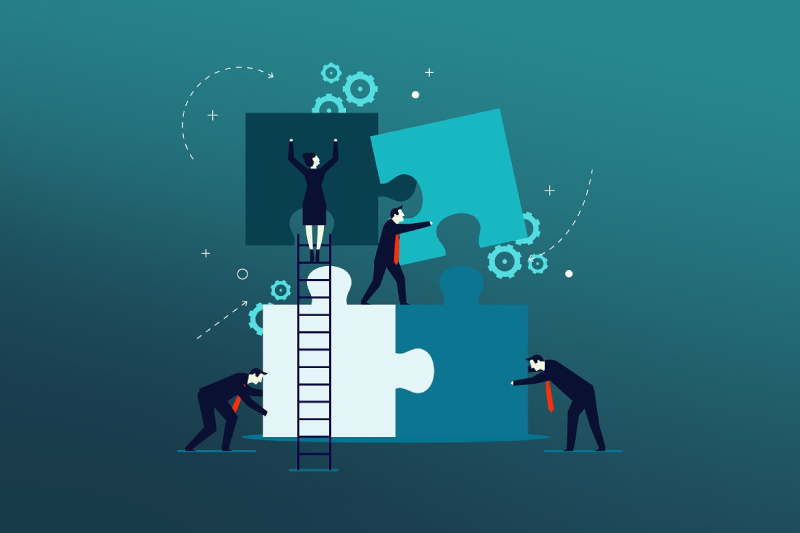Every company’s goal is to hire and retain top talent. Yet, why is retaining employees so challenging? It has become more common for employees to look for a new job within a few years of joining their current company. Employee disengagement and lack of interest in their current job can be attributed to this issue. Recent research shows employee engagement is key to job satisfaction, and workers are looking for more than a 9-to-5 job.
What is employee engagement? The concept of employee engagement in human resources (HR) refers to the level of commitment a person has to their job and the company. Engaged employees are passionate about their work and the success of their company and believe they are making an impact. They are motivated more by their performance and the success of their company than by a fat paycheck.
What is an employee engagement model? How does it work?
The purpose of an employee engagement model is to learn what motivates employees so that they can be productive and happy at work. Below discussed are the three best engagement models designed based on organizational psychology. These models will help employers create engagement strategies that are unique to their organization.
The Zinger Model
David Zinger’s employee engagement model has a pyramid structure. The Zinger model focuses on ten essential activities that managers must perform to ensure employee engagement. It stresses the link between employee connections to each other, the organization, their customers, their community, and the employee’s individual performance. This model begins with emphasizing the employee’s needs (e.g., well-being, meaningful work) and then working your way up to the outcomes.
The following are the references made in the model:
- The bottom row – Identifying the needs
In Zinger’s pyramid, the bottom row is focused on the essentials that the average employee needs to be productive. At this point, the most important activities are to improve your well-being, use strengths, create purpose and rekindle your vitality.
- The second row: Unifying relationships
The second row of the pyramid focuses on the foundations for establishing connections between people and organizations. The most important activities are to build connections, recognize others, and master moments in this context.
- The third row: Enhancing performance
The third row of the pyramid converts the building elements of community and individual engagement into concrete strategies to achieve outcomes. The primary goals are to keep track of progress and optimize performance.
- Top of the pyramid: Achieving Outcomes
Engaged employees are the ultimate goal of employee engagement initiatives – the ones who contribute to increased productivity and profitability.
The Zinger model involves multiple moving parts intended to help leaders and organizations build their engagement with employees consistently.
The Deloitte Model
Deloitte’s employee engagement model is based on the notion of creating an environment that is “irresistible,” that is, an environment where employees want to come to work every day. Developing a culture that values and challenges your employees is key to the model. It consists of five components.
- Meaningful work
Deloitte identifies four components a worker needs to feel purposeful in their job. These include autonomy, hiring culture, working in small yet empowered groups, and time for slacking.
- Hands-on management
Managers can make or break an employee’s experience working for you. Employ the following actions to engage your employees. Clear, transparent, and actionable objectives, coaching, management development, and performance management.
- Positive work environments
It is possible to make workers look forward to coming to work every day by creating an environment that feels valued, respected, comfortable, and flexible.
- Potential for Growth
People who become stale in their jobs lose motivation to perform their duties. To prevent your employees’ job from becoming stagnant, offer the following opportunities for their growth - Training and education on the job
- Facilitating talent mobility
- Promoting a high-impact learning environment
- Trust the people who are in charge.
Leadership that is committed to its employees is the last and most crucial component. The four components of this are mission and purpose, continuous investment in people, transparency, and inspiration.
The AON Hewitt Model
Aon Hewitt’s employee engagement model incorporates business results. This model recognizes the direct effect of employee engagement on many KPIs within the business, including customer satisfaction, profitability, and beyond. The Aon Hewitt approach is to bridge the gap between business objectives and the drivers of engagement by incorporating engagement outcomes.

Employee Engagement factors
Employee retention and engagement are now top priorities for managers. Yet multinational organizations struggle to develop effective employee engagement strategies. It is essential to understand what engaged employees are in order to develop a better strategy.
You can use this list to identify a motivated employee
- They are aware of their responsibilities
- They are loyal to their employer and highly productive
- They are motivated to help their company grow
- They are highly motivated to achieve high levels of performance
- They also have strong emotional and rational connections to their company
A successful employment engagement strategy depends on several factors.
Factors that affect employee engagement
These are the top three factors that an employer needs to consider in order to engage and inspire their employees.
Leadership
Incompetent management results in businesses losing billions annually. A competent and responsible leader will build a strong relationship with their team, support their ideas, and foster an open and honest communication culture. By investing in the right leadership, you can improve employee engagement and productivity.
Rewards and Recognition
If you want to encourage your employees to participate more in your organization, design a recognition program that is in line with the values and culture of the company. Employees will be motivated to work harder when they receive recognition and rewards. A simple gift card or an award for “Employee of the Month” can boost employee morale.
Professional growth
LinkedIn reported that 25 percent of millennial (and Generation Z) employees believe that learning is the key to their happiness at work. Employee engagement is strongly correlated with professional development.
How to improve employee satisfaction and loyalty?
Employee engagement is not limited to quarterly evaluations, and quick emails returned at the end of the year gatherings. It is a two-way relationship between the employee and the company that can lead to higher morale, efficiency, and productivity. Effective remote team building activities improve this relationship and put the employees at the center of the organization.
Here’s a list of 8 activities that encourage employee engagement:
Parties at the workplace
Most businesses host annual summer and winter parties to celebrate another successful year. Gatherings like these are a great opportunity to invite spouses, significant others, or family members. You can even save money by inducting event management companies to host your gatherings.
Learning lunches
Learning lunches can be a great way to bring together your staff and help them learn. Encourage collaboration by inviting different departments to share their work, celebrate birthdays, or take on a new topic together.
Competitions, tournaments, or games for employees
Employees enjoy participating in tournaments and games. Cost-efficient gatherings like these can be an effective means of building relationships. It would be fun to hold a pool tournament, ping pong challenge, or baking competition for the entire office.
Holidays and special occasions
Special days like “Bring your Dog to Work Day” offer employees a refreshing change of pace. Even simple things like taking your child to work or getting a day off for uniforms can be included.
Trainings
The reputation of boring training sessions is a negative one. You can engage your employees while teaching something new by bringing a unique speaker to your training sessions.
Recognition programs
Recognizing employees is a great way to encourage interaction between them.
Team-building activities.
Employees enjoy participating in team-building activities outside of work. Laser tag, go-car racing, and bowling are just a few of the many available activities.
Charity and fundraisers days
Fundraising and charity days are great ways to bring people together in support of a common cause. Allow your employees to organize events about topics they are passionate about if possible.
Innovative ways to increase employee engagement
Employee engagement has never been easier than it is today. Your organization should consider these innovative activities to improve employee productivity and engagement.
Keep your feedback lines open with chatbots
Chatbots can ask specific questions about your company and follow up with employees to address any issues. Chatbots may offer workers a more relaxed way to voice their dissatisfaction than they would with their boss or colleagues. Chatbots are responsive and available to workers at all times.
Take appropriate action for feedback response
The act of gathering feedback is not sufficient. Businesses that listen to and act on employee input are empathetic, and they foster employees’ development. Establish benchmarks and metrics using data from surveys or other feedback channels to guide your response
Social Recognition
Lack of recognition is one of the main reasons workers consider quitting their job. Social recognition offers organisations a wider range of benefits, including higher individual performance, better customer satisfaction ratings and higher stock prices. This also increases employee engagement and retention.
Informal virtual office hours
Slack or virtual meetings provide a venue for informal discussions between workers of all levels. The result is a platform for honest input from all levels.
Implement employee wellness programs
Wellness programs place a high value on employee health and can help reduce stress on the job. They also increase productivity and employee satisfaction. They remind employees that their well-being matters to you.
You now know what you can do to engage your employees. But, which activities and ideas should you focus on? Determine which members need to be engaged next. You should then devise an action plan.
